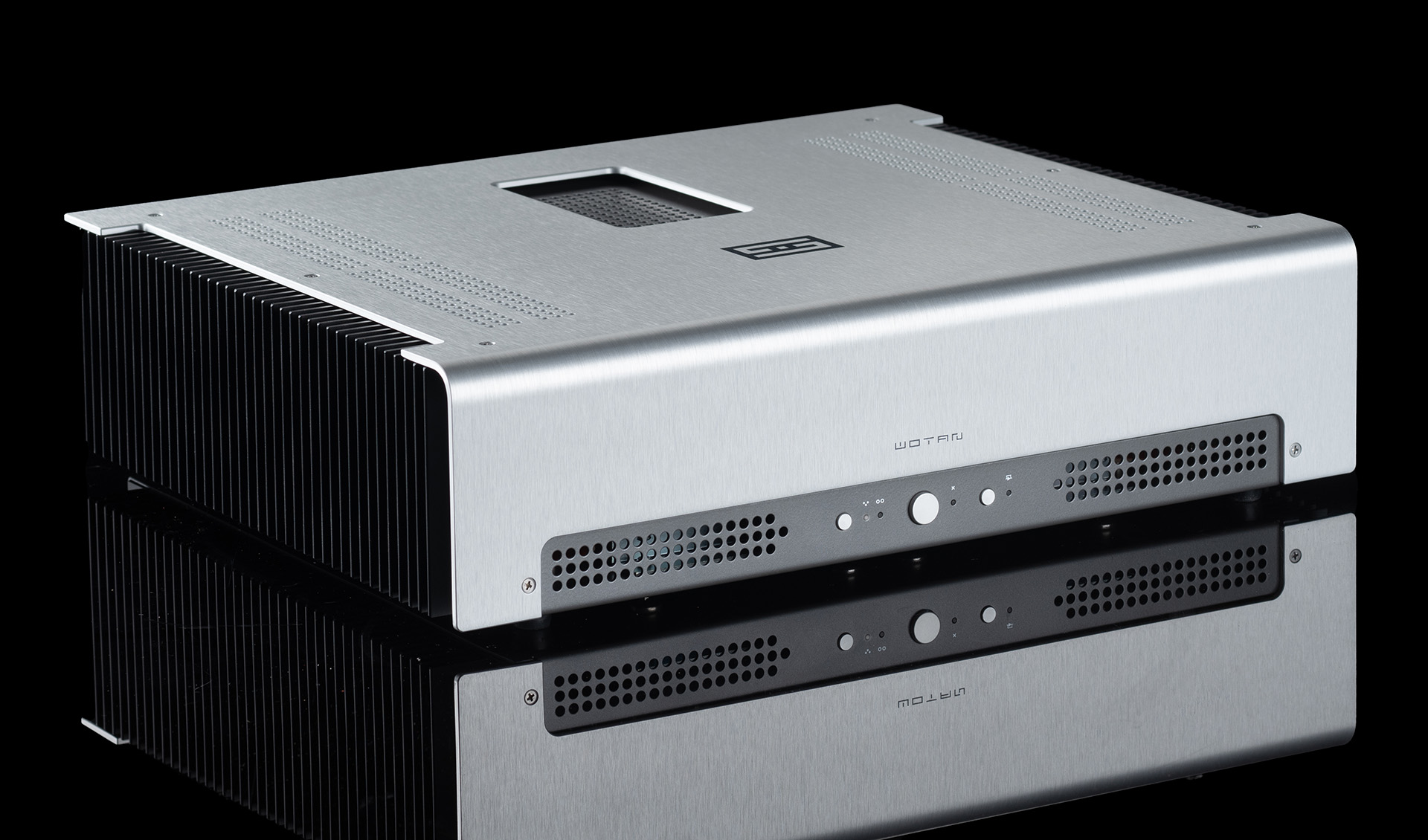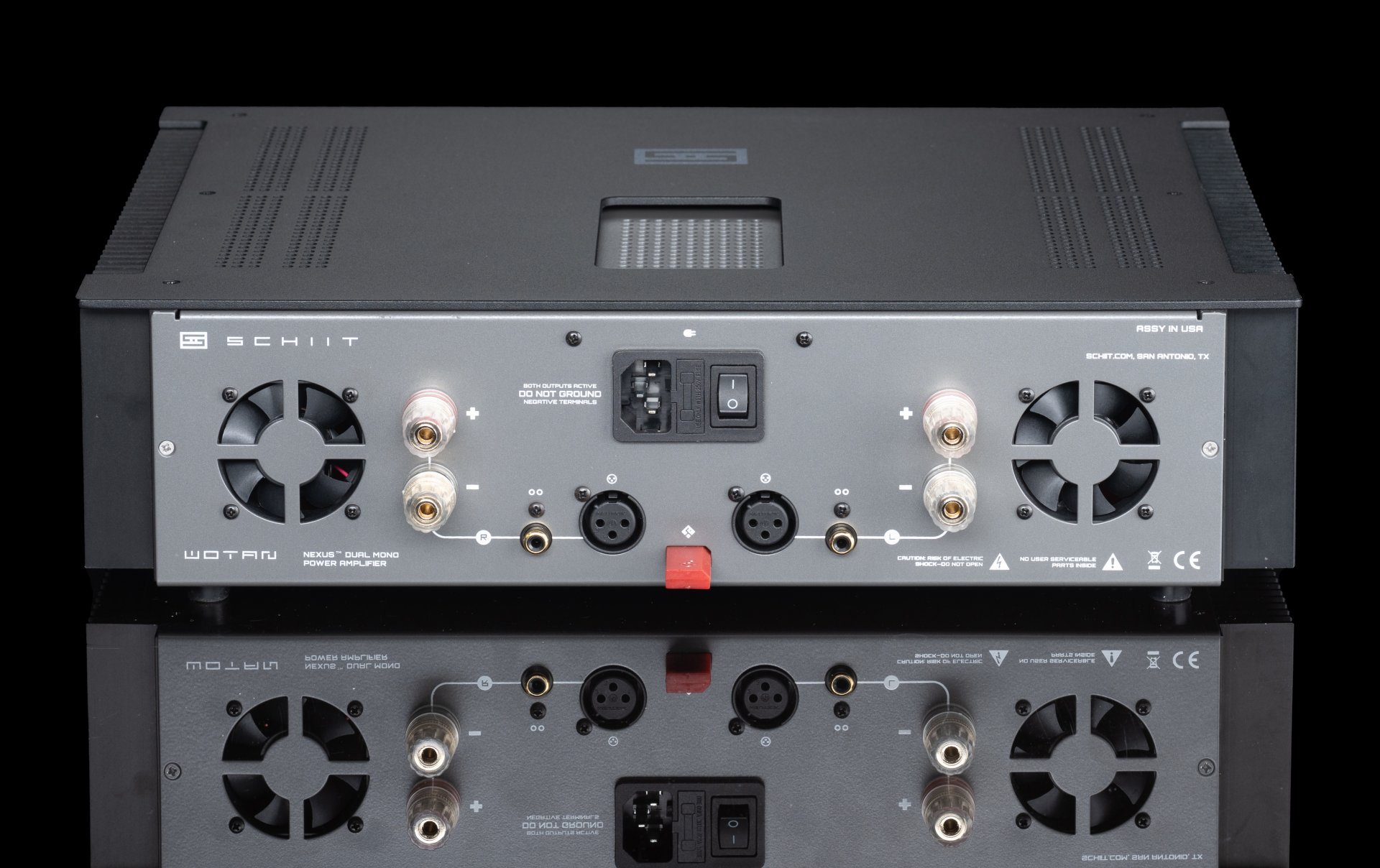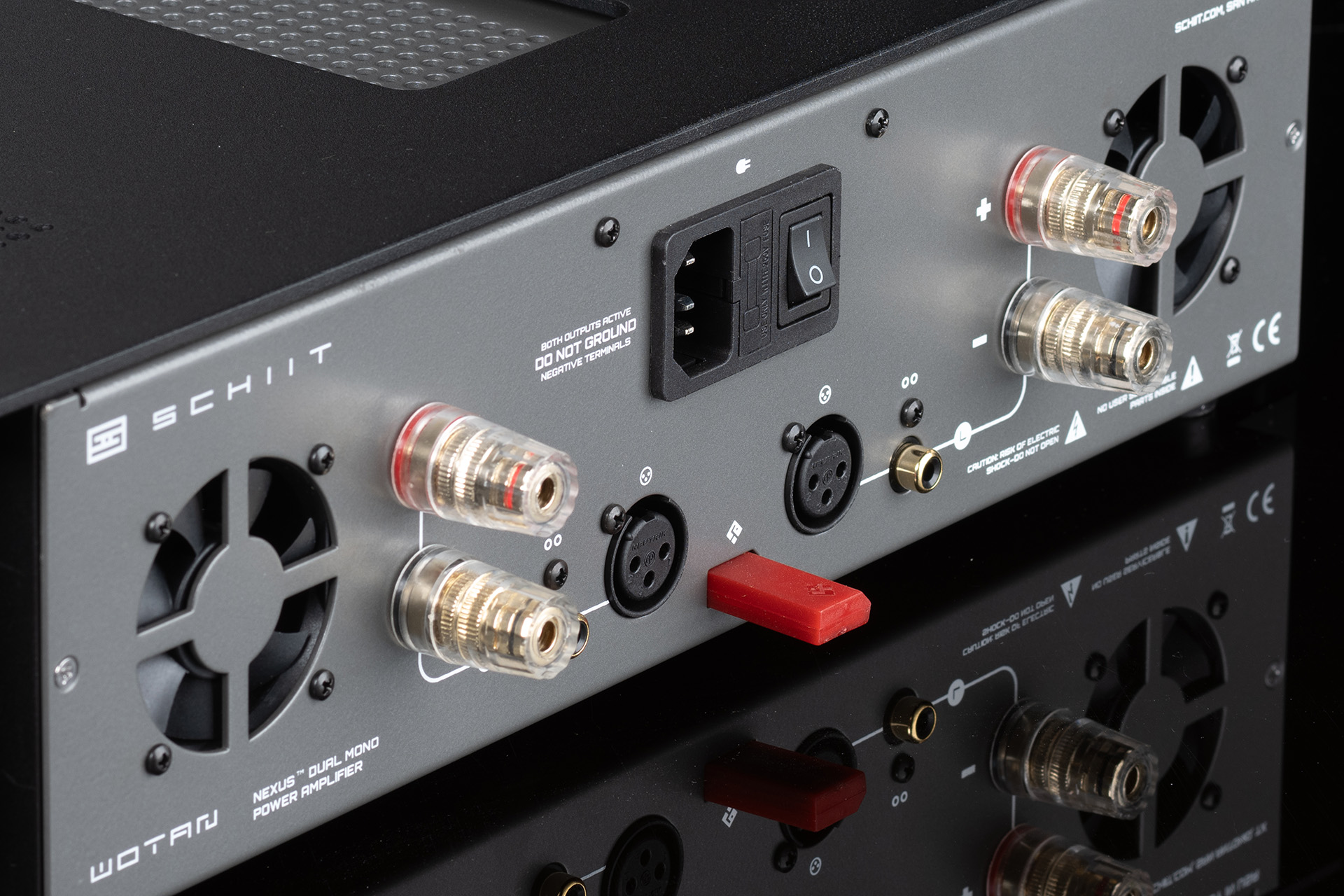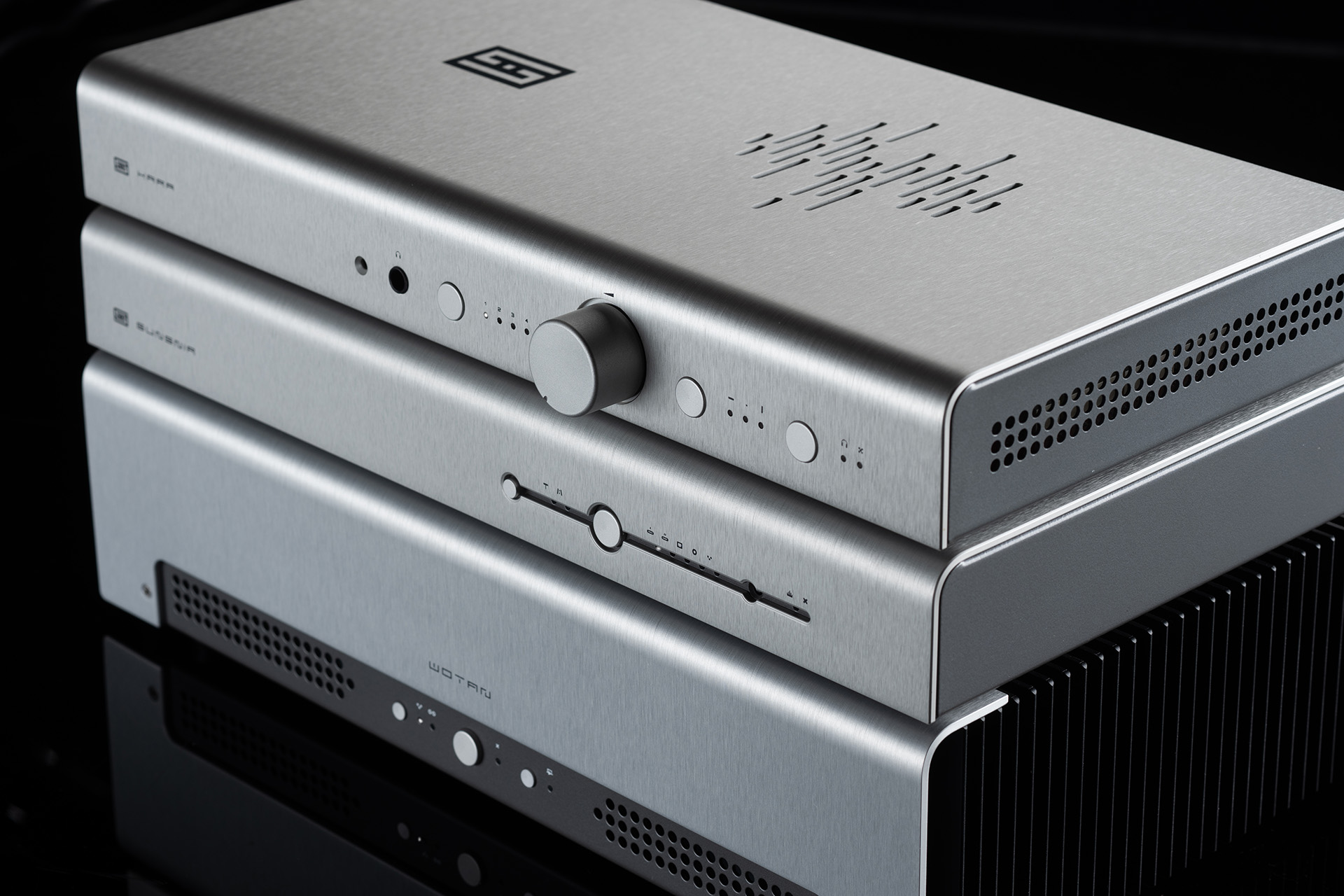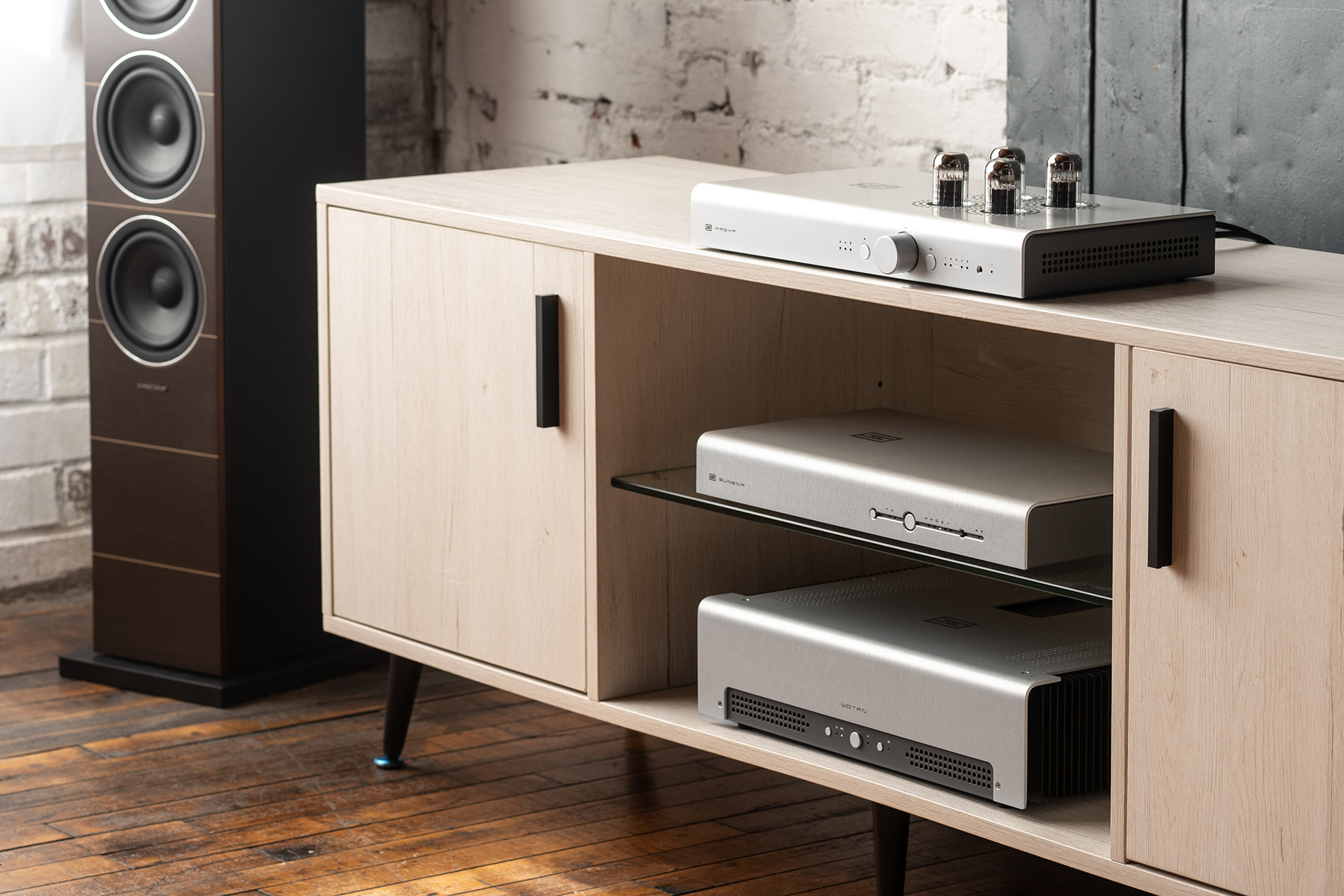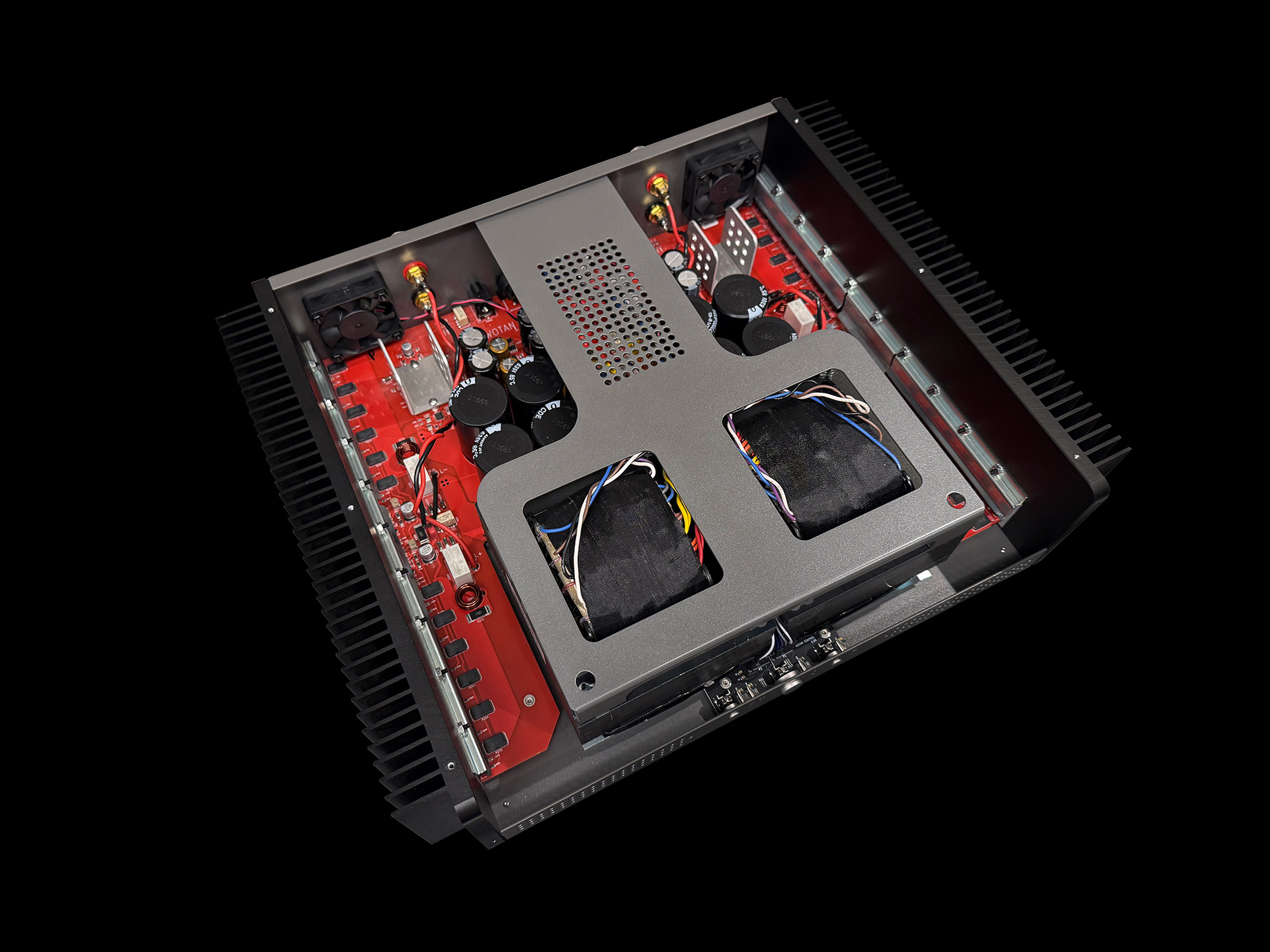Size: compact for a 2 x 200W amplifier, but not desk friendly
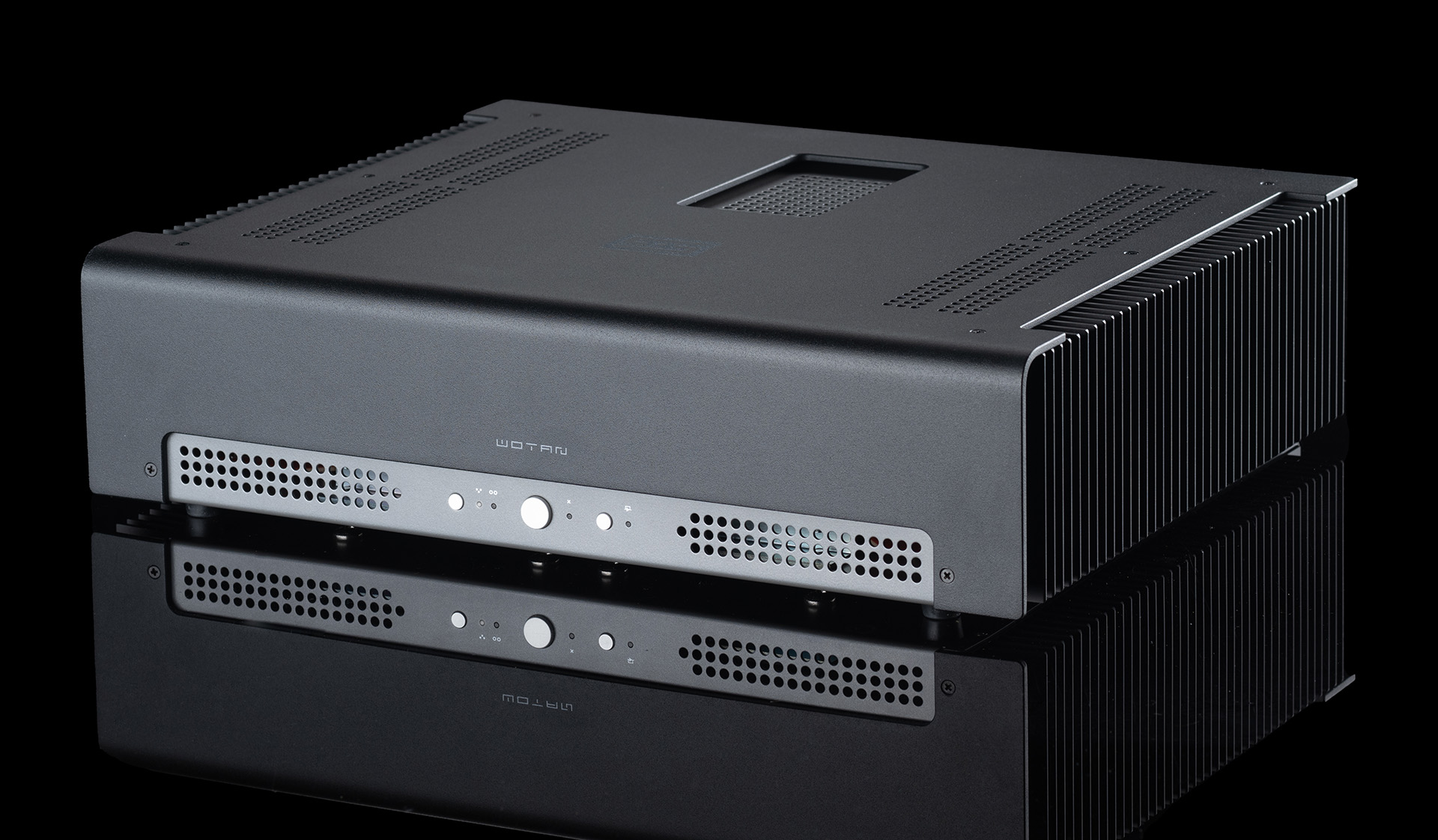
Wotan
Dual-Mono, High Power Nexus™ Differential Power Amp
Description
Specs
FAQ
Reviews
Downloads

Dual Mono. Totally Overbuilt.
Size: compact for a 2 x 200W amplifier, but not desk friendly
Fans?
Yes.
I mean, argh, fans!
Yes. But they’re usually off.
What do you mean they’re usually off?
We mean that, at normal volumes into normal loads in normal rooms, the fans are usually off. They only turn on when you crank it, or if you like it 85 degrees F in the house, or if your speakers are insanely difficult to drive, or all of the above.
But! Fans!
You seem to have a problem with the idea of fans. So did we, for many decades. The thing is that fans these days are very reliable, reasonably quiet, and much less expensive than they have ever been. So now they make sense. Times change. Try something new. You might like it!
But what about all the cat hair and brisket smoke that the fans will pull into my amp?
We’d suggest maybe not putting it near pets or patio, but hey, you do you. Seriously, though, there are many ways to manage dust in your listening environment. Or, if you’re 100% totally opposed to fans, then there’s always Tyr, which, since it has twice the total heatsinking, doesn’t need a fan.
Speaking of Tyr, this is rated higher than Tyr into 4 ohms. How does that work?
It works that way because Wotan doesn’t have a huge choke in-between the transformer and the power supply, so it has less power supply losses. Which means it puts out a bit more power than Tyr, especially into 4 ohm loads.
So this is essentially a stereo Tyr?
Essentially. It uses the same transformer as Tyr (but 2 of them), and the same Nexus topology. Wotan, however, is a conventional Class AB output stage design, unlike Tyr’s Continuity™ output stage.
But you added switchable feedback on Wotan, but not Tyr?
Development improves the breed. We tried switchable feedback on the Wotan prototype, we liked it, so it went on the production version.
Doesn’t no feedback monumentally screw up the damping factor?
It doesn’t do it any favors. Nor is it so hot for measured distortion. So if you want high damping factor and lower distortion you should go with Tyr. Or Vidar.
But isn’t a higher damping factor good?
Maybe. Perhaps. Depends on the system. We'd recommend trying Wotan both with and without feedback, and choose the one you like. There are no prizes here other than your own satisfaction.
Boy you guys are weird.
Yeah, try talking to Tyler about free will and millionaire AIs. Have fun with that.
Okay, moving on. Will this amp drive any speaker I have?
Pretty much anything, yes.
Why can’t I run it mono like a Vidar?
Because it’s already a differential amplifier. Since it’s already differential, both output terminals are driven—there is no “ground.”
But it looks like Vidar puts out more power into 8 ohms when run mono.
Yep, it does. Vidar, however, doesn’t have Wotan’s thermal management; Wotan will be much better for difficult loads than Vidar.
So does this have standby like Vidar?
Absolutely. Press a button on the front panel and Wotan goes to sleep. It only consumes about 1-2 watts in standby, while being ready to run. Or you can select standby from Forkbeard.
Can I run balanced inputs like Tyr?
Yes. Even better than Tyr, actually, since you can switch from balanced XLRs to single-ended RCAs via front-panel switch. Or via Forkbeard.
What does Forkbeard™ do?
Forkbeard does everything a remote control does, but for multiple products in multiple stacks. For a preamp, it controls volume, selects inputs, picks output modes, etc. But it also does more, providing instant power on an amp, for example, and health alerts if there's a fault. It can do even more when multiple products are brought together, like Visual Volume, an easy way to tell how much headroom you have left in your system.
Wait a sec, did you say Instant power? LIKE VU METERS?
Not exactly. These are actual power meters. They show how hard the amp is working.
WAIT A SEC THAT’S VU METERS!
Not really. They do have a floor, as in a lowest level they can run, based on amp bias. They will vary with speaker load. They are not traditional VU meters, showing what your input level is. But they definitely let you know how hard the amp is working!
HOLY MOLY VU METERS!
You seem very excited. That’s cool.
No Android option?
Not yet. Someday soon. Hopefully Summer 2025.
Wait a sec, I don’t want no Bluetooth crap on my product!
Cool, then get it without the Forkbeard module. You’ll also save $50.
I’m OK with Bluetooth, but I don’t want to share data with you. What nefarious info are you collecting with your Forkbeard app?
None. Hell, you don’t even have to make an account to use it. No sign in, no info, hell, no pairing—it’s based on a broadcast prototcol so it’s as easy as downloading the app, opening it up, picking the Forkbeard products that show up, adding a passcode (so your butthead neighbor can’t mess with you), and using it.
So this is not a Class D amp?
No.
No switching supplies?
No.
Some of my friends are super into Class D and say it’s the future.
There are plenty of Class D amps out there. Wotan isn’t one of them.
Okay. Fine. Who’s Wotan?
Wotan is another name for Odin in Norse Mythology. He’s basically the biggest baddest god of them all. Which, after you experience Wotan, we think you’ll believe is totally appropriate.

